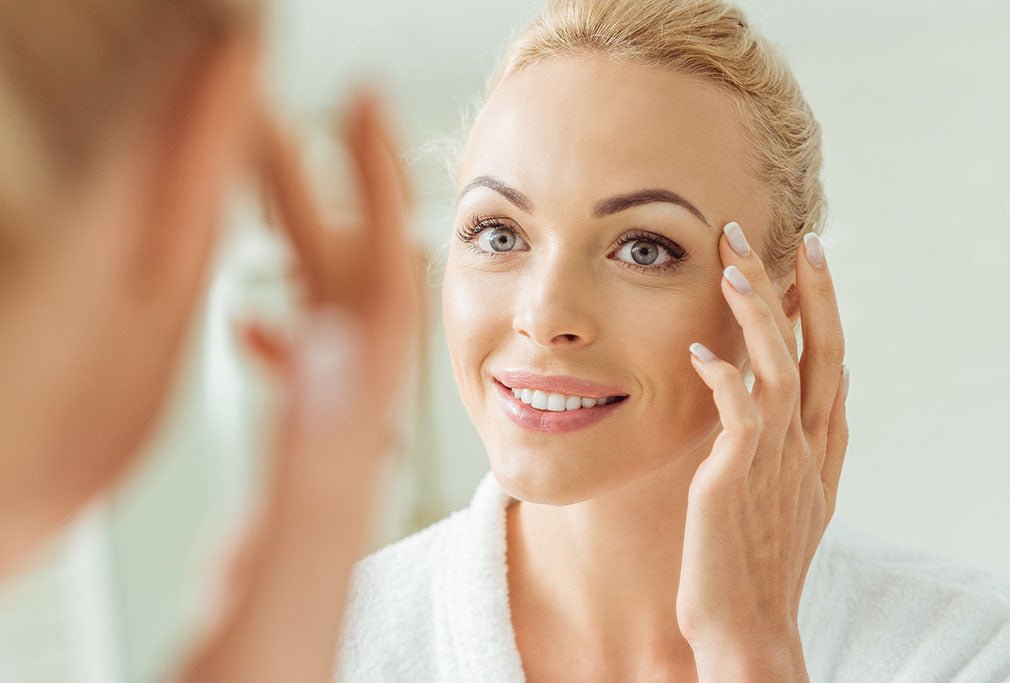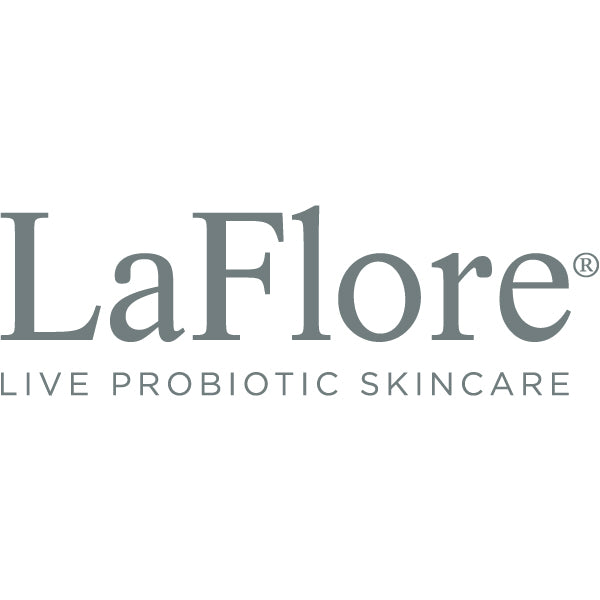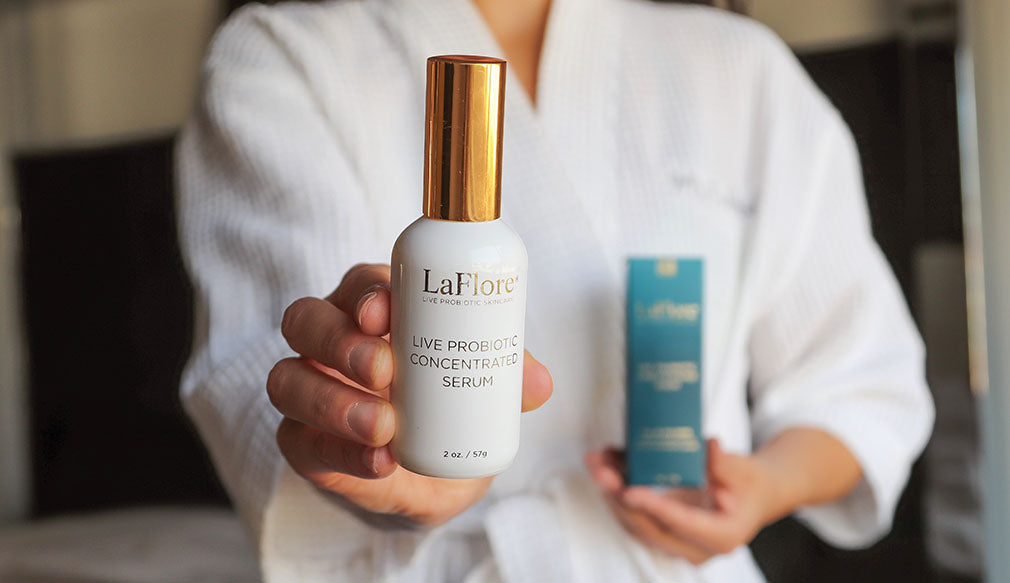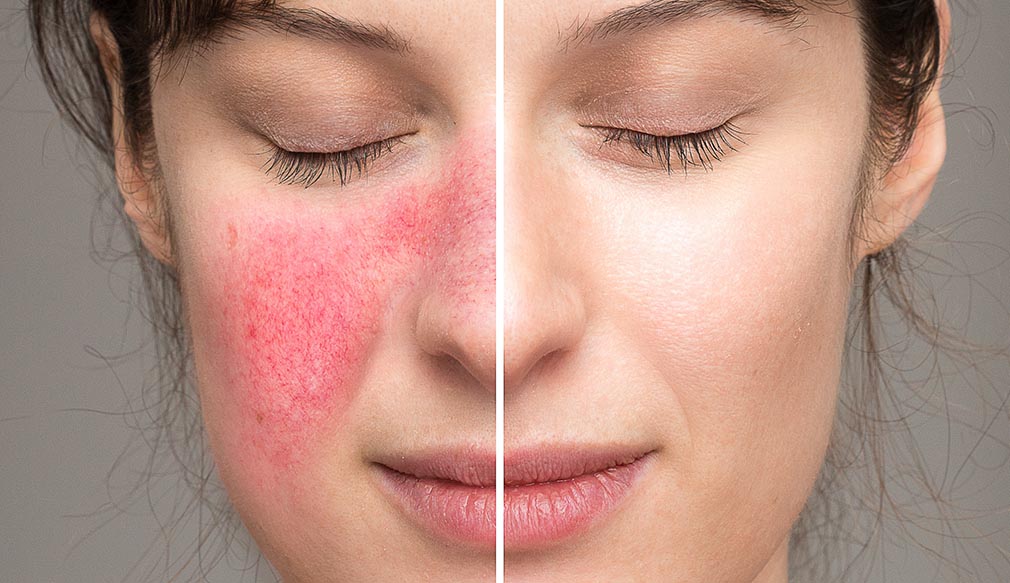
Myth Busting – Is Bacteria in Skincare a Bad Thing?

Myth Busting – Is Bacteria in Skincare a Bad Thing?
The subject of skincare is not only complex it’s infinite. It seems like new brands and ingredients pop up overnight. Add in all the other variables to consider like skin type, the variety of concerns, new trends and the constant evolution of understanding surrounding skincare and skin health, and we can say it’s altogether exhausting. That’s why we’re here to explore and debunk the myth… bacteria in skincare is a bad thing.
Now, here me out… Yes, most bacteria in skincare is not ideal, but there are some that may be more beneficial than we realized. First, let’s explore the function of bacteria on the skin.
The Skin Microbiome
Just like your gut, your skin is home to a community of billions of friendly living microorganisms (bacteria), also known as skin flora. This community is called the skin microbiome. Think of it as an invisible ecosystem that lives on the skin that helps defend the skin against pathogens and manages the ideal pH while continuously delivering vitamins, minerals, and peptides the skin needs for balance. The skin microbiome is significant to skin health because research has shown that almost every skin concern is directly related to an imbalanced skin microbiome or lack of beneficial skin flora.
What Constitutes as “Beneficial Bacteria?”
Modern day testing has the ability to differentiate beneficial versus harmful bacteria according to the cell’s pH level, size, and shape. Another name for beneficial bacteria is probiotic. To be labeled as a probiotic the bacteria must be able to be isolated from the skin and have a proven benefit such as improved immune function and/or inflammation reduction.
Probiotics vs. Antibiotics – Which One is Better for Skin Health?
As professionals, we have a pretty intimate relationship with antibacterial ingredients. These include naturally derived tea tree oil, witch hazel, rosemary, and lemon as well as adaptogens like ginseng, ashwagandha, some mushrooms and goji. There are also many synthetic options such as clindamycin. In fact, I don’t doubt that you used one today either on yourself or a client, but have you ever wondered how they really work?
These ingredients are put into skincare and onto the skin to “reduce” bacteria on the skin, but the big kicker about anything antibacterial is that it’s not selective. They not only reduce harmful bacteria, but they also reduce the beneficial bacteria our skin microbiome needs to have balanced, healthy skin. Now, don’t get me wrong there is a time and a place for these, but antibiotics are like napalm and can quite harmful.
In fact, the more antibiotics you use, the less likely they are to work when truly needed. Topically, they have even been proven to slow healing of wounds, and cause redness, swelling, blistering, and itching. Using antibiotics when you don’t need them can also breed “superbugs.” These are harmful bacteria that are hard to kill and, in some cases, make the skin concern worse instead of better. Ideally antibiotics should only be used for skin issues when there are bumps filled with pus, there is crusting the color of honey, the skin is warm to the touch or there is a wound that is red, painful, and swollen*.
Conversely, topical probiotics can be used as a preventive as well as a skin health treatment. When applying probiotics, you are sending in reinforcements to support naturally occurring probiotics already battling the harmful bacteria. Ultimately, they work to improve the skin microbiome function naturally by out competing the harmful bacteria without stripping away the entire population of skin flora. They also provide the skin with postbiotic metabolites that have antimicrobial properties and include vitamins, AHA, PHA, BHA, amino acids, micronutrients, antioxidants, anti-inflammatory substances, and more. All of which not only improve the immune function of the skin but offer other aesthetic results like improved skin texture and tone and reduction in spots and fine lines.
When taking all of this into consideration I’d say the myth of bacteria in skincare is officially busted! If you are interested in learning more, I invite you to do your research and seek out experts who specialize in topical LIVE probiotics. Numerous skincare brands incorporate only probiotic extracts (lysates) Or prebiotics in their formulas and call it “probiotic skincare” when all actuality to be classified as a probiotic product it must contain LIVE bacteria.
* ABIM Foundation (n.d.). Antibiotics For Your Skin. Choose Wisely. Retrieved March 31, 2023. Read more.




